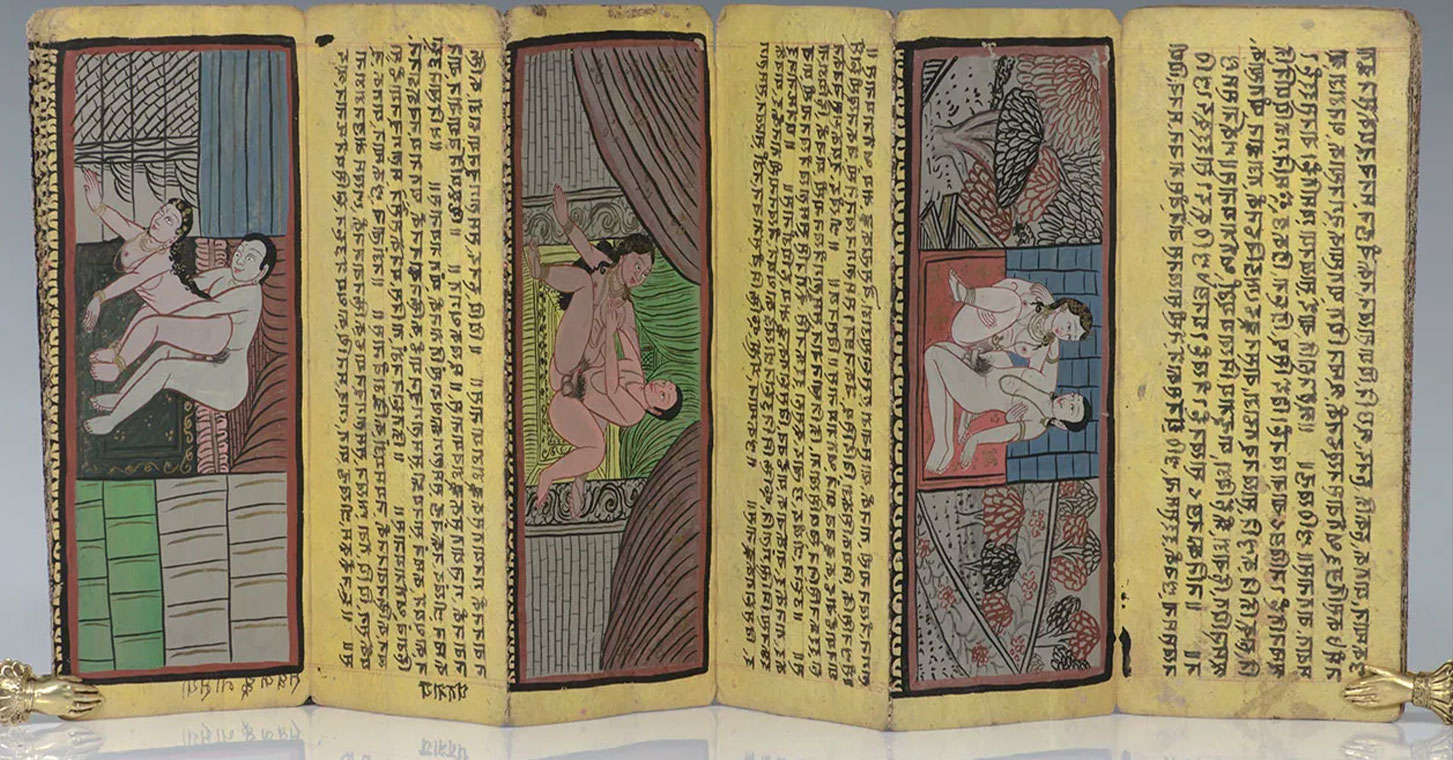The Real Kama Sutra Is Not Tantra……
…But Here’s Why You Should Be Interested in Both
Tantra and the Kama Sutra are often lumped together in modern sex writing, but in truth they are only distantly related. Both are fascinating, both worth exploring, both powerful when you learn it, but they serve very different purposes.
When most people hear Kama Sutra, they immediately picture statues of entwined lovers in elaborate positions, the endlessly recycled images from Southern India’s Dakini temples. Yet those statues are tantric, not Kama Sutra. The text itself mentions only about thirty sexual positions, while its true scope is far broader.
Unfortunately, many books and websites reduce the Kama Sutra to these chapters alone—embraces, kisses, scratches, bites. But to stop there is to miss its essence.
The Kama Sutra is not tantric. But it is something equally valuable.

Book of Kama Sutra
Beyond Technique: The Spirit of the Kama Sutra
Any lover knows arousal is not just technique. Thirty positions may impress, but they won’t keep someone haunted by your touch years later. What lingers is imagination, playfulness, and the awakening of the senses.
The Kama Sutra recognizes this. Its focus is not spiritual liberation, but sensuality—how to delight, seduce, and captivate through charm, wit, scent, and subtle touch. Tantra takes this further by coupling sexual bliss with spiritual ecstasy. That step is missing from the Kama Sutra.
And yet, the Kama Sutra is no mere “sex manual.”
What the Kama Sutra Really Is
The word Kama means love, pleasure, and the life of the senses. Sutra means a thread of aphorisms—concise wisdom woven together. Written between the 1st and 4th centuries A.D. by the sage Mallanaga Vatsyayana, the Kama Sutra was intended for India’s warrior-ruler caste, the Kshatriya.
Vatsyayana begins with balance: Dharma (spiritual life), Artha (worldly duty), and Kama (pleasure of the senses). To him, success lay in attending to all three, without becoming a slave to passion.
He gave rulers a guide not just for sex, but for life’s pleasures: matchmaking, flirting, courtship, marriage, affairs, the economics of desire, even potions and charms. It is a treatise on the art of seduction and the management of love in all its worldly forms.
It does not, however, teach tantric puja or spiritualized sexuality. Those secrets remained oral, passed only to initiates, and written down much later.
Kama Sutra vs. Tantra
So, why no tantric sex in the Kama Sutra? Because Vatsyayana understood: not everyone is meant to spiritualize sex. His work was practical, aimed at rulers balancing pleasure with responsibility, not seekers of liberation.
Yet traces of the tantric mind remain. His sensitivity to women’s pleasures, his insight that sexuality begins long before the bedroom—in imagination, conversation, scent, and touch—shows the hand of a tantric thinker applying wisdom to the sensual realm.
In his personal life, Vatsyayana was a seer and spiritual master. But the Kama Sutra was never meant to reveal tantra’s esoteric secrets.
Why You Should Read Both
If you want to understand sensuality, desire, and human nature, read the Kama Sutra. It is a manual for seduction, balance, and the joy of the senses.
If you want to spiritualize your sexuality, if you feel the call to discover the Divine in every caress, you must look to Tantra—and to real Tantrics, not to quick-fix guides written for Western markets.
The Kama Sutra teaches you to master sensual life. Tantra teaches you to merge sensuality with spirit. Both are powerful, yet they are not the same.
For every seeker, there is a text. For every student, a teacher.



